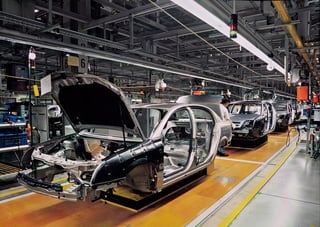Strip St eel[1] [2] or cold rolled strip is a steel product that is produced from a hot rolled strip that has been pickled. The coil is then reduced by a single stand cold roll steel mill straight away or reversing mill or in a tandem mill consisting of several single stands in a series. The strip is reduced to approximately final thickness by cold-rolling directly, or with the inclusion of an annealing operation at some intermediate thickness to facilitate further cold reduction or to obtain mechanical properties desired in the finished product. High carbon strip steel[3] requires additional annealing and cold reduction operations.[4] The coil is then slit to the desired width through the process of roll slitting.
eel[1] [2] or cold rolled strip is a steel product that is produced from a hot rolled strip that has been pickled. The coil is then reduced by a single stand cold roll steel mill straight away or reversing mill or in a tandem mill consisting of several single stands in a series. The strip is reduced to approximately final thickness by cold-rolling directly, or with the inclusion of an annealing operation at some intermediate thickness to facilitate further cold reduction or to obtain mechanical properties desired in the finished product. High carbon strip steel[3] requires additional annealing and cold reduction operations.[4] The coil is then slit to the desired width through the process of roll slitting.
The final product typically consists of cold rolled steel that has been cut into strips of a specific widths and coiled or oscillate coiled for delivery, frequently interleaved with paper or another material which protects the surface finish of the material and assists in retaining oil or some other rust prevention solution. This product is often later stamped to form a part from the strip steel.
Strip steel is known for having tighter thickness tolerances than cold rolled steel. Prior to rolling, hot rolled strip steel is pickled to remove surface impurities and ensure the final product will have a clean, uniform finish.
Strip steel is non-shrinking and non-creeping at ambient temperatures. It is a uniform, lightweight steel that is easy to fabricate, transport, and install. While it’s available in a variety of tempers, determining the proper temper for your project depends on your formability needs.
Cold rolled strip is a popular metal product within the automotive industry, stamped into body panels as well as other automotive components. You’ll find strip steel used in appliances like refrigerators, washers, and dryers. The unique properties of strip steel have also made it a popular material for building and construction materials.

